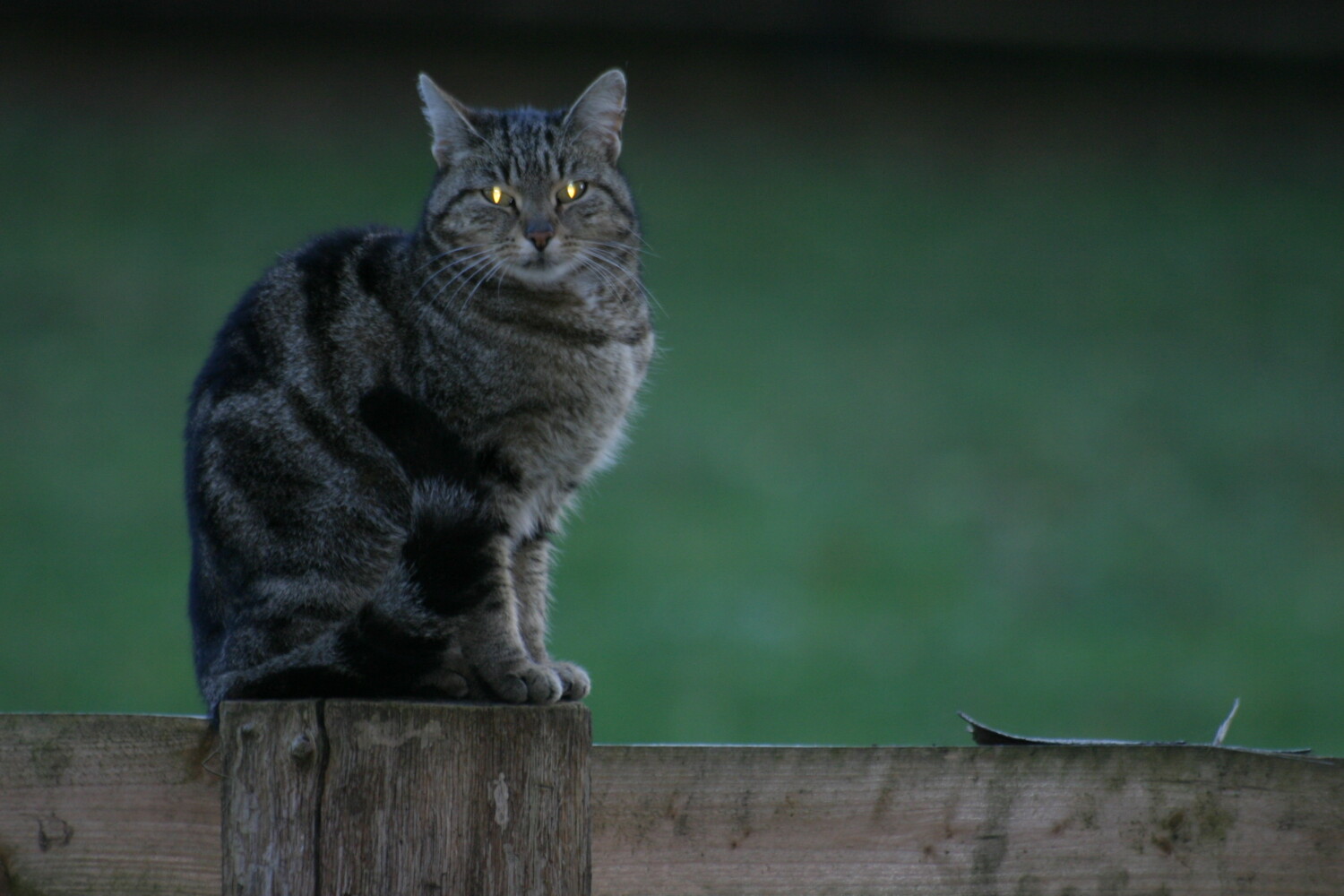Recently, dog vision filters have been all the rage on TikTok. Users can select this filter, aim their phone cameras at their surroundings, and see the world (through their screens) the way their dog sees it.
I asked my daughter, who is 17 and therefore a TikTok expert, to take a video of our Boston Terrier, Peppa, with her favorite, bright red plush toy. “Record a video of Peppa with her toy,” I said. “And then show me what the toy looks for her, through the dog vision filter.” Here’s what she sent me:
@jengkizer Peppa’s view of the world.
MORE: Study shows cats will sit in boxes even if they’re an optical illusion
So, in the video the red plush toy is kind of a washed-out green. My daughter found this depressing, but I didn’t think it was such a tragedy. Peppa can still fetch it when thrown. She can still chew it open and scatter the cotton all over the place for me to pick up. Who cares what color it is?
But then I started watching some of the scores of TikTok dog vision filter videos, and I began to understand why some people are so affected by their dog’s literally pallid view of life. This one of Kyle Scott’s Buddy the Coliie — playing fetch with a drained-of-color ball in a drained-of-color field — is particularly affecting, especially since Scott captioned it: “I’m never blaming Buddy for losing his ball ever again.”
@buddythecoliie I’m never blaming Buddy for losing his ball ever again
#fyp #foryoupage #dogvisionfilter
Are Dogs and Cats Actually Colorblind?
Discover Magazine set out to learn if these filters are a true depiction of what dogs (and cats, for that matter) can see. As the magazine explains, all of us — humans, dogs and cats — have light-sensitive cells within our retinas, which are known as rods and cones. Rods detect motion and allow you to see in low light. Cones enable you to see details and colors.
Most humans have lots of cones, which grant us trichromatic vision. We see three primary colors: red, blue and green — whose wavelengths form different combinations that result in many colors. Dogs on the other hand have more rods than cones (giving them dichromatic vision), according to Drs. Ryan Llera and Lynn Buzhardt of the VCA Animal Hospital network.
“Dogs possess only two types of cones and can only discern blue and yellow,” they write. In other words, dogs can see shades of blue, yellow and gray, but they can’t see green, red or orange. So, dogs are similar to humans who have red-green colorblindness, according to PetMD. This is the most common type of colorblindness.
Cats also have more rods than cones, making them better at seeing yellows and blues. But cats also have some cones (more than dogs do), which gives them trichromatic vision, says Discover Magazine. Scientists think that this enables them to see some greens, though not as vibrantly as humans do.
You may ask how these vets know this, since no human has actually seen the world through a dog’s or cat’s eyes. The answer is that scientists can use ocular images of an animal’s eyes to identify these structures. And PetMD explains that they’ve also tested animals to see how they react to different wavelengths of light and experimented with how they respond to color cues.

MORE: Dogs who have a canine companion at home may be healthier, study says
Do Dogs and Cats Have Good Vision?
Dogs have a number of visual differences from humans, in ways that make their eyes both more and less effective than our own eyes.
“Dogs are more near-sighted than we are,” explains Buzhardt of the VCA Animal Hospital. That means objects in the distance appear blurry to them. She also says they’re less cognizant of changes in brightness.
But there are also benefits to having more rods than cones in your retina. Rods are “extremely sensitive cells that catch movement,” Dr. Jerry Klein, the chief veterinary officer at the American Kennel Club, told Newsweek. This rod dominance means their motion-related vision is much better than ours. They also have a much better ability to see in the dark, due in part, Klein says, to a lining of tissue behind the retina that’s a “reflective membrane known as tapetum.”
Like dogs, cats are also near-sighted. Discover reports that things humans can spot 100 to 200 feet away only come into focus for cats when they’re around 20 feet away.
But cats can also see better in near-darkness than we can — as much as eight times better, Discover Magazine says. Like dogs, they also have this tapetum lining, which reflects light and boosts their night vision. If you’ve seen your cat or dog’s eyes glowing in the dark, this is what you’re seeing.
In fact, if you showed your dog or cat a filter of what we humans see at dusk, they would no doubt feel sorry for us. “I’m never blaming my human for losing his ball ever again,” your dog would probably comment, followed by a crying emoji.

For those like me who signed up for TikTok but rarely use it, here’s how to use the dog vision filter: Open TikTok and locate the plus sign at the bottom of your screen. Click on it. An icon that says “Effects” will pop up on the bottom left. Select it and type “dog vision” into the search bar. This will allow you to start recording your surroundings in dog-tinted color.
This story originally appeared on Simplemost. Check out Simplemost for additional stories.


